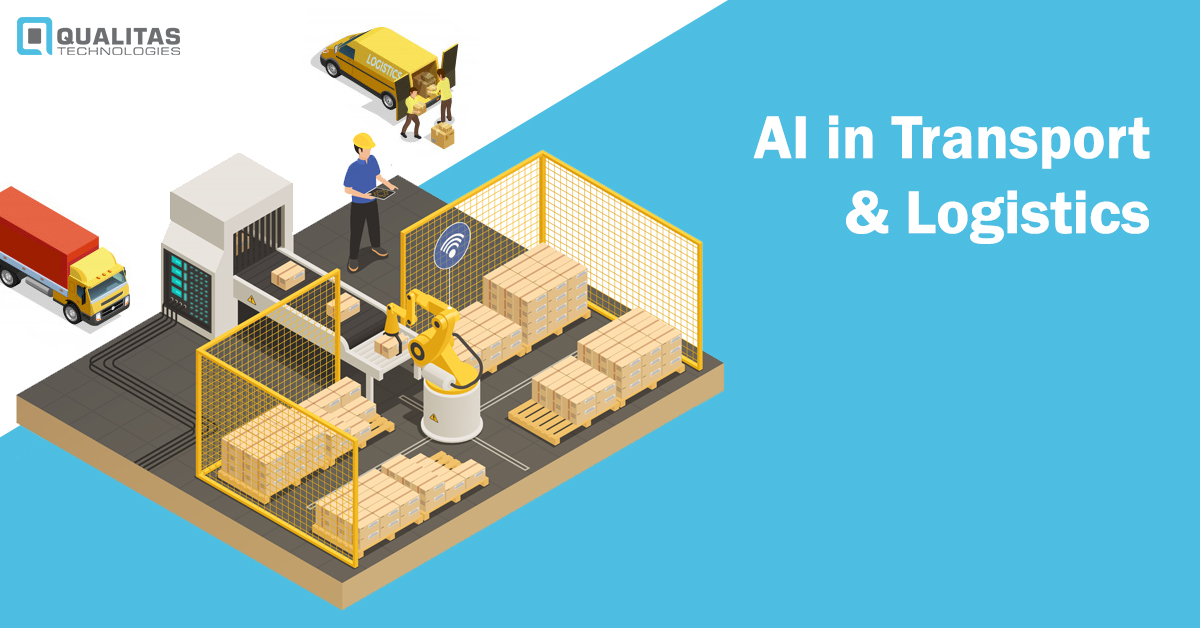
AI has been a revolutionary invention for various industries, but more so for the logistics and transport industry. AI in manufacturing plays a significant role in reducing costs, saving time, increasing productivity and accuracy using cognitive automation. AI can improve warehousing operations like inventory processing and analyzing information. Predictive demand and network planning get ramped up by the usage of AI. There are also self-driving vehicles to bring a change in the supply chain. The rapid growth of digitization is causing more and more companies to add AI to their supply chain to optimize their resources and reduce the energy and resources spent on tracking and logistics
Related Article– Effects Of Augmented Reality Startups On The Logistics Industry
Applications of AI in logistics and transportation
Planning
Any industry needs adequate planning to supply a demand based on the market. Planning can synchronize the overall supply chain as a continuous process. Machine learning models and other intelligent algorithms can be embedded in supply chain technologies to improve the logistics process.
Demand forecasting
An AI-powered demand forecasting tool reduces error rates compared to traditional forecasting methods. Increased accuracy in demand prediction can help AIacturers in manpower planning, retailers in reducing holding costs and increase customer satisfaction as there are fewer stock-outs because of good scenario analytics and numerical analytics.
Automated warehouse with robots
Warehouse robots can help warehouse employees in picking, sorting, stowing, and transporting packages. This technology can enhance a business’s supply chain management. AI technology in warehouses can also centralize data processing units and increase the overall productivity of operations.
Visual Inspection
Machine Vision technology is an AI algorithm that can visually inspect products for various kinds of damages. Surface defects, missing parts, and so on can lead to dissatisfied customers. With the help of MV technology, businesses can reject defective products, check for the depth of the damage, and take further actions.
Also, Read Robotic Process Automation – Carving the Future of Different Businesses
Analytics Applications
Dynamic Pricing
Dynamic pricing is a real-time pricing system where the price of a product responds to changes in the market, like demand, competition prices, subsidiary product prices, and supply. The pricing software uses machine learning algorithms to determine customer demand fluctuations through historical data and adjust the prices of the product as fast as possible.
Route Optimization
AI can also help the logistics industry in analyzing existing routes and track route optimization. Efficient routes for logistics trucks can be identified with the help of shortest path algorithms through graph analytics. This can reduce shipping costs and speed up the shipping process.
Also, Read The Future Of Manufacturing
Applications of AI-based vision systems in logistics industries
3D and 2D robot vision for pick and place
Manual work is quite error-prone. 3D and 2D robot vision for picking and placing can reduce error rates and save costs. Machine vision can identify objects and detect steps of picking operations. These vision systems help determine whether objects are placed correctly in different containers. They also provide visual feedback about the handling process to reduce errors.
Visual product inspection before packaging
Visual product inspection just before packaging can verify the positioning, placement, location, and condition of the product before it makes its journey down the supply chain. This visual inspection through machine vision technologies ensures that a good product is being packaged and sent.
Barcode and IoT code reading
Barcode reading on boxes and other packages through machine vision can identify and categorize different products. This ensures an error-free production and packaging process. Machine vision identification technology can optimize productivity by detecting bottlenecks in production pipelines.
Data matrix code reading
Data matrix code reading is also similar to barcode reading and identification performed by machine vision technology. This code reading ability can track a package throughout the supply chain through its data matrix code. It can also be used to categorize packages based on various parameters.
Related Article– 7 APPLICATIONS OF MACHINE VISION
Benefits of Machine Vision System in supply chain
Reduce operational costs and increase profitability through zero shipping errors
Translating operational processes into automatic processes is always a profitable choice. Product flow, packing, picking, and sortation can be automated through machine vision and reduce shipping errors which in turn will increase profitability.
Achieve 100% accuracy of shipments, inbound and outbound
With the help of machine vision’s sophisticated tracking system, inbound and outbound shipments can be tracked accurately and in real-time. This ensures that 100% of the shipments reach in a safe and timely manner.
Speed up loading and unloading at the dock
Owing to object detection and barcode and data matrix reading abilities of the machine vision system, identifying and categorizing packages becomes easier. This speeds up loading and unloading at the dock as the organization of shipments and finding the correct shipments takes a relatively short time.
Eradicate costly mis-ship fines from supply chain stakeholders
Together with an efficient tracking system, object identification techniques, and better organization of shipments, the chances of mis-ships get reduced to 0% and this eradicates any risk of fines from supply chain stakeholders.
Reduce order lead times and faster shipping turnarounds
Machine vision not only increases organizational efficiency, but the data stored by its algorithms can help you forecast demands and analyze market conditions. Both these factors can create an optimum environment to reduce order lead times and have quicker shipping turnarounds.
Thus, leveraging AI in supply chain and logistics is the best decision any company can take. AI can assist you in all the aspects of logistics, starting from warehouse management to ensuring that the shipment reaches the correct customer in time. Using technologies like machine vision, graph analytics, deep learning, and other algorithms, AI has disrupted supply chain management. Integration of AI in the complex web of production and distribution increases productivity and reduces idle time drastically. The transport and logistics industry will see significant improvements with the addition of AI. Your company can get an edge over its competitors with the help of AI in your logistics operations.
Register For Our Upcoming Free Webinar





